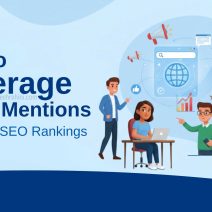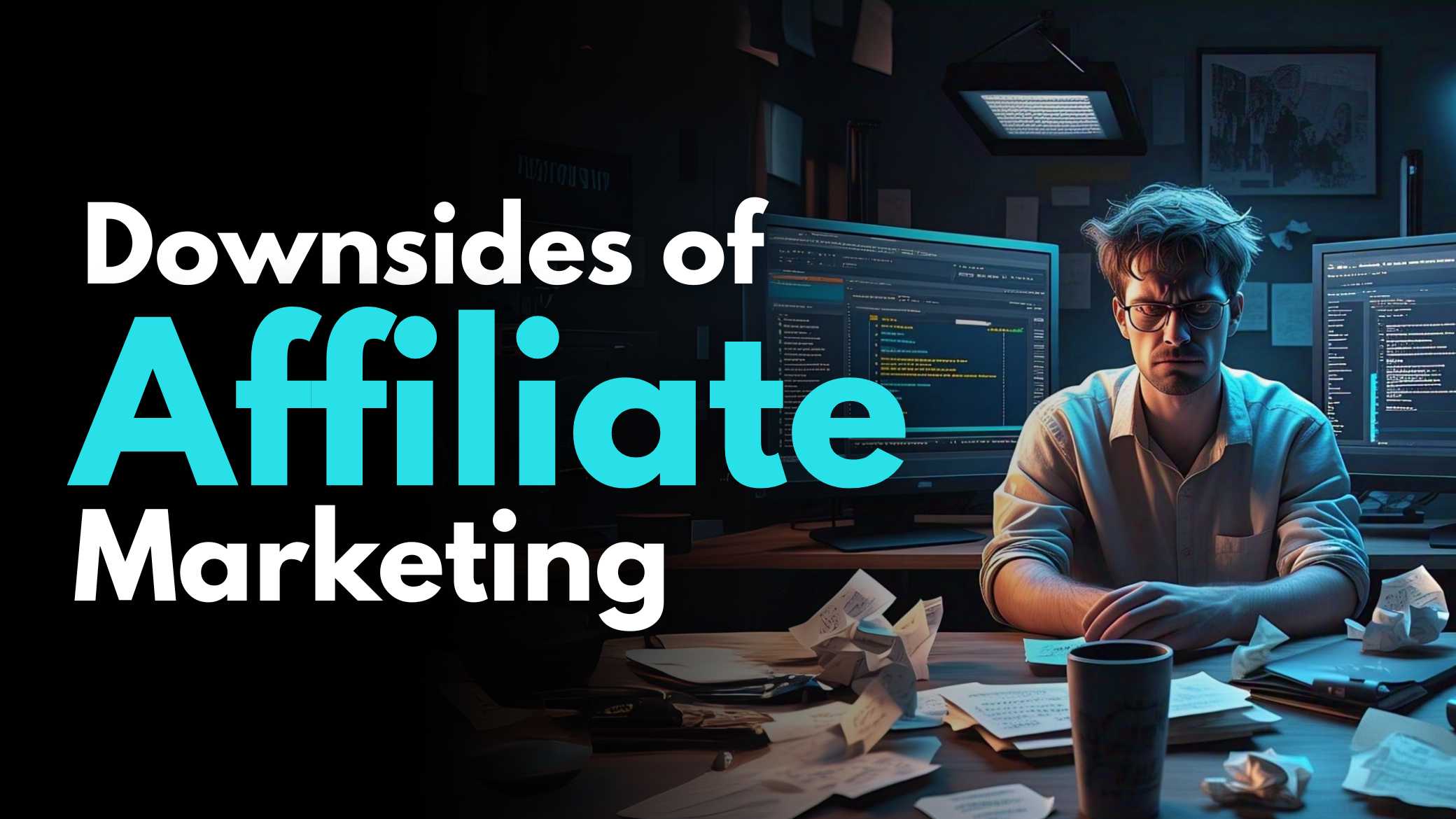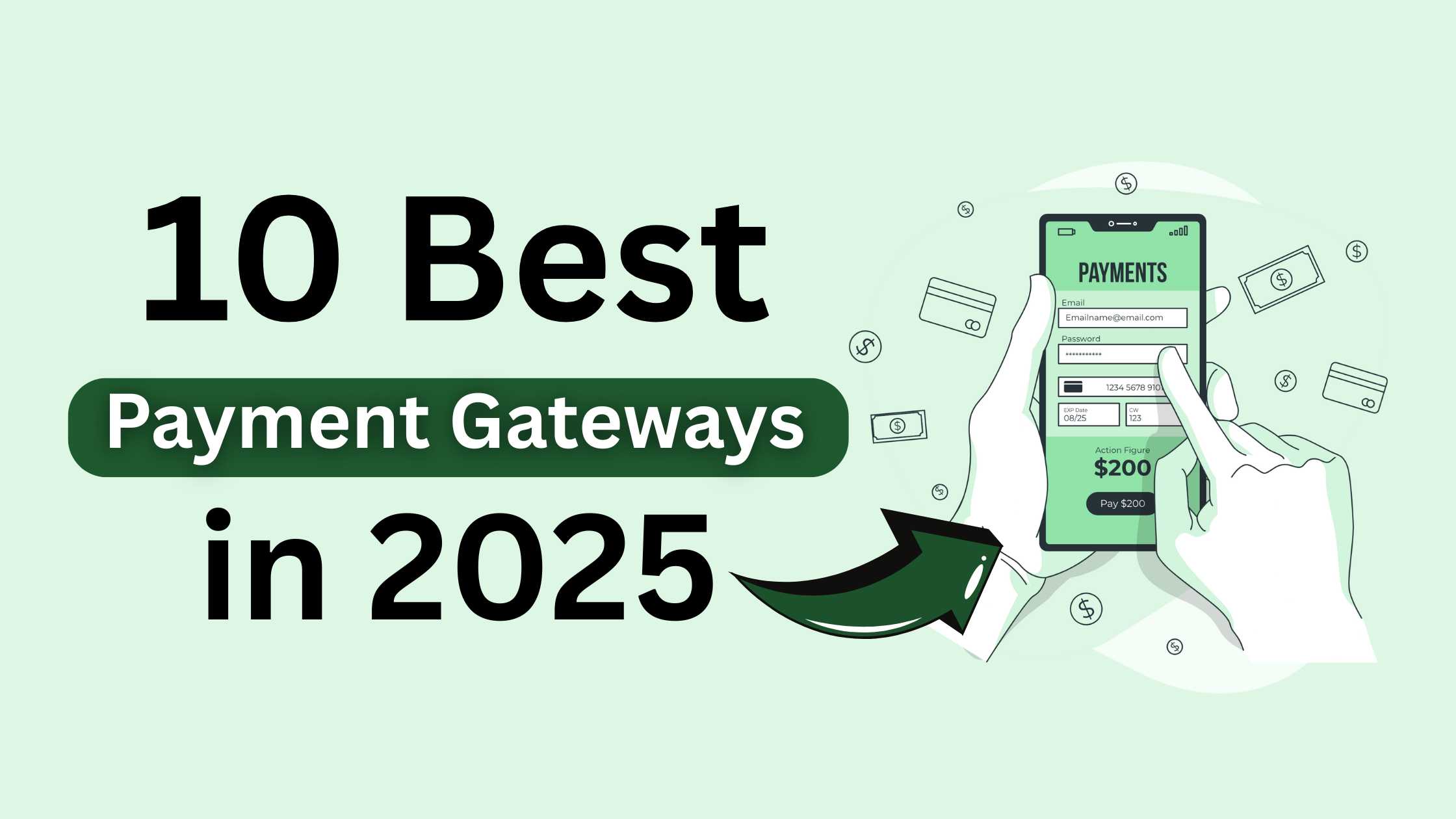Downsides of Affiliate Marketing : Affiliate marketing has become one of the most appealing online income streams, particularly for bloggers, influencers, YouTubers, and digital entrepreneurs. In 2025, more people than ever are turning to affiliate marketing with the hope of generating passive income and escaping the traditional 9-to-5. While the potential rewards can be substantial, the path to success is not as easy as many affiliate gurus make it seem.
Table of Contents
Beneath the surface lies a variety of challenges, risks, and pitfalls that can severely impact your earning potential and long-term sustainability. This comprehensive guide explores the downsides of affiliate marketing in 2025 and reveals the hard truths that aspiring affiliates need to consider before committing to this business model.
1. High Competition in Every Niche

One of the biggest disadvantages of affiliate marketing in 2025 is the sheer volume of competition across every niche. Whether you’re in health and wellness, personal finance, SaaS, or online education, there’s a good chance the market is already flooded with content.
Also Read : What Is Reverse Dropshipping ?
Established marketers dominate G search rankings, social media platforms, and YouTube, often backed by years of SEO authority, huge subscriber lists, and premium content. For new affiliate marketers, breaking into a competitive niche without a strong brand, original content strategy, or financial backing is extremely difficult. Even low-competition niches get saturated quickly as affiliate forums, blogs, and tools expose them to the public. In this crowded landscape, standing out and gaining traffic is more challenging than ever.
2. Dependency on Third-Party Platforms
Affiliate marketers do not control the affiliate programs they rely on. You’re at the mercy of third-party companies like Amazon Associates, CJ Affiliate, ShareASale, or niche-specific programs. These platforms can change their policies, reduce commissions, implement payout thresholds, or even shut down your account without prior warning. This lack of control poses a significant business risk. A prime example is Amazon’s abrupt commission reductions over recent years, which slashed affiliate earnings in multiple categories. In 2025, these policy shifts continue to affect the income stability of thousands of affiliates. Relying entirely on external platforms means your business can be disrupted overnight, making diversification critical for long-term survival.
3. Commission Cuts and Unpredictable Payouts

While affiliate marketing promises commissions for each sale or lead, the reality is that many programs pay very little. Some categories offer just 1% to 5% per sale, meaning you’ll need massive traffic or high-ticket items to generate meaningful income. Furthermore, payouts are rarely immediate. Programs typically have a holding period of 30 to 90 days to account for product returns, cancellations, or refunds. In 2025, this cash flow delay can be problematic, especially if you’re investing in paid ads, email marketing tools, or content production. Additionally, payout minimums—such as needing $100 to trigger a withdrawal—can further slow your earning potential as a beginner.
4. Passive Income is Often a Misleading Promise
One of the most overused phrases in affiliate marketing is “make money while you sleep.” While the concept of passive income is real, it’s rarely passive in the beginning stages. Building an affiliate website or content channel that earns money consistently requires months—if not years—of upfront work. You need to research profitable keywords, create optimized content, build backlinks, develop an audience, and continuously update your content to remain relevant. In 2025, competition and algorithm changes demand ongoing involvement. Without constant improvement and analysis, your income can decline just as fast as it grows. Most beginners never reach a point where affiliate income is truly passive.
5. SEO is a Long-Term Game
Search Engine Optimization (SEO) is often the foundation of long-term affiliate success, but ranking content on G or YouTube is a long, complex, and unpredictable journey. In 2025, G favors high-authority websites that demonstrate E-E-A-T—Experience, Expertise, Authoritativeness, and Trustworthiness. These algorithm updates make it harder for new websites or channels to gain visibility. Without domain authority, backlinks, and high-quality content, it’s difficult to rank even for low-competition keywords. Moreover, SEO is not a one-time activity. It requires constant optimization, content updates, and strategic link-building. For beginners hoping to see quick results, the slow nature of SEO can be demoralizing.
6. High Cost of Paid Advertising

To speed up results, many affiliate marketers turn to paid advertising using G Ads, Facebook Ads, TikTok, or native ad platforms. However, advertising costs have skyrocketed in 2025. Popular niches like insurance, finance, health, and software can cost several dollars per tap. For affiliates earning low commissions, this often leads to negative ROI. Additionally, ad platforms have tightened their policies against affiliate links and certain industries. Getting your ad account banned or disapproved is common. Running successful ad campaigns requires advanced knowledge in copywriting, analytics, and funnel optimization. Without this expertise, paid ads can become a financial drain rather than a source of scalable traffic.
7. Lack of Control Over Products and Customer Experience
As an affiliate, you’re promoting someone else’s product or service. This means you don’t control the sales page, checkout process, shipping, customer support, or refund policies. If the merchant delivers a poor experience, it reflects badly on you—even though you had no hand in it. In 2025, customers expect seamless online experiences, fast delivery, and instant support. Any hiccup in the customer journey can damage your credibility. Additionally, if a merchant changes their landing page or product features, your old content or links may become outdated, hurting conversion rates and trust. This lack of control is a major limitation compared to selling your own products or services.
8. Cookie Duration and Tracking Challenges
Affiliate marketing depends on tracking technologies like cookies and pixels to attribute sales. However, cookie durations vary significantly across programs. Some only offer 24-hour tracking windows, meaning if the user doesn’t buy right away, you don’t earn anything. Moreover, increasing concerns over data privacy in 2025—such as GDPR and browser changes like ITP (Intelligent Tracking Prevention)—have reduced the effectiveness of cookie-based tracking. Users who browse in incognito mode, use VPNs, or block trackers might not be tracked at all. This means you can drive traffic and sales without getting credited, reducing your potential income despite your marketing efforts.
9. Risk of Promoting Low-Quality or Scam Products
The affiliate landscape is full of questionable products, particularly in niches like crypto, health supplements, online courses, and finance. Some affiliate programs overpromise and underdeliver, damaging your credibility and hurting customer trust. Worse, some programs operate unethically—delaying payments, denying commissions, or disappearing altogether. In 2025, with more “get rich quick” schemes than ever, affiliate marketers must perform due diligence before promoting any offer. If you promote a product that later turns out to be a scam, not only do you risk legal issues or chargebacks, but your audience may also lose faith in your recommendations permanently.
10. Content Creation Burnout
Affiliate marketing involves constant content creation. Whether you’re managing a blog, a YouTube channel, or social media accounts, you need to produce fresh, engaging content regularly. In competitive niches, you’ll also need to update older content to keep up with trends and maintain SEO rankings. This ongoing demand for creativity, consistency, and relevance can lead to burnout. In 2025, even with the help of AI writing tools, human effort is still required for ideation, strategy, and personalization. Without proper systems and support, content fatigue becomes a major roadblock that causes many affiliate marketers to quit early.
11. No Direct Customer Relationship

When someone buys through your affiliate link, the merchant—not you—owns the customer relationship. You don’t get their email address, purchasing history, or feedback. This limits your ability to retarget them or offer upsells and cross-sells. Building a long-term business becomes difficult without customer data. In contrast, if you sell your own products or services, you retain full ownership of the customer and can create deeper engagement over time. In 2025, many marketers are transitioning to hybrid models where they first build an email list or community and then promote affiliate products to retain some level of control and engagement.
12. Algorithm Dependency on G, YT, and Social Media
Many affiliate marketers rely on organic traffic from platforms like G, YT, Insta, or TikTok. However, these platforms frequently update their algorithms, which can significantly impact visibility and traffic. A video or blog post that once brought thousands of visitors can drop off the map after a single algorithm change. In 2025, platform dependency remains one of the biggest threats to affiliate stability. Without a diversified traffic strategy—including email lists, push notifications, and alternative channels—you risk losing your entire audience overnight due to factors outside your control.
13. High Refund Rates and Chargebacks
Even after a successful sale, affiliate marketers face the risk of returns and chargebacks. Many programs deduct refunded sales from your future payouts, while others withhold commissions entirely for certain high-risk products. Chargebacks are especially common in niches like digital courses, self-improvement, and software. In 2025, the prevalence of no-questions-asked refund policies means you may not get paid even after generating a lead or sale. This unpredictability makes financial planning difficult and adds an extra layer of stress to your affiliate marketing efforts.
14. Legal Compliance and Disclosure Requirements
Affiliate marketers are legally required to disclose affiliate relationships to their audience. In regions like the U.S., Europe, and India, failing to disclose can result in penalties, account bans, or lawsuits. In 2025, authorities have intensified crackdowns on non-compliant content across blogs, YouTube videos, and social media posts. Clear, visible disclaimers are now mandatory. Moreover, certain niches—like finance, health, and insurance—require additional regulatory compliance. Understanding and adhering to local laws, tax codes, and platform-specific disclosure requirements is crucial. Ignorance is no longer an excuse, and legal troubles can arise from even minor oversights.
15. Not a Reliable Full-Time Income for Everyone
While some affiliates earn six or even seven figures annually, the vast majority don’t make enough to replace a full-time job. According to affiliate marketing income reports in 2025, nearly 80% of affiliates earn less than $500 per month. Many earn nothing at all, especially within the first year. Success stories are real but rare, often involving years of trial and error, investment, and pivoting strategies. Treating affiliate marketing as a side hustle or a supplementary income source is more realistic than betting your entire livelihood on it from the start.
Downsides of Affiliate Marketing – Conclusion :

Affiliate marketing in 2025 is still a viable way to earn money online, but it’s far from the “easy money” model many imagine. High competition, algorithm changes, commission cuts, tracking limitations, and burnout are just a few of the challenges you’ll face. Success requires patience, skill, consistency, and adaptability.
Buy Now : Ecommerce Website With 100 Products
The key is to approach affiliate marketing with a long-term mindset, diversify your traffic sources, build a loyal audience, and choose high-quality affiliate programs. It’s also wise to combine affiliate marketing with other business models like digital products, courses, or consulting to create multiple income streams. By understanding the downsides upfront, you can plan strategically and avoid common pitfalls on your journey to building a sustainable affiliate business.
Disclaimer
This content is for educational and informational purposes only. It does not constitute financial, business, or legal advice. Affiliate marketing involves risk, and results vary based on individual effort, niche, and market conditions. Always conduct thorough research before investing time or money into affiliate programs or tools.
Keywords : Downsides of Affiliate Marketing – Downsides of Affiliate Marketing 2025 , Downsides of Affiliate Marketing in india – Downsides of Affiliate Marketing today








